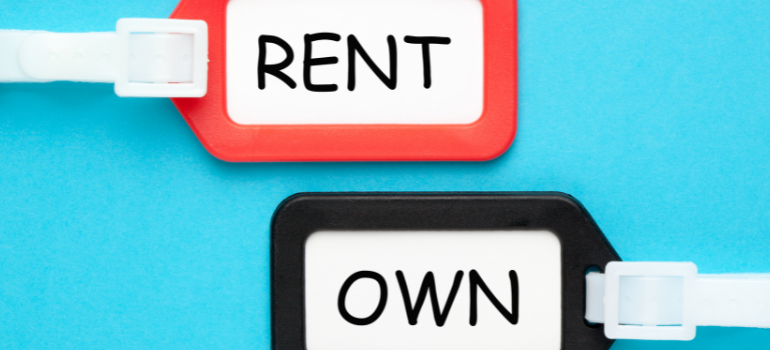
What’s the Difference Between Owned vs Rented Media?
If your company typically throws spaghetti at the wall and hopes that it sticks when it comes to your marketing, you’re never going to achieve the results that you hope for. Taking a strategic approach is a necessity, and a key part of this strategy is understanding the distinction between owned and rented media. Both play essential roles in reaching, engaging, and converting customers, but they serve different purposes and require different management approaches.
In this article, we’ll explore the difference between owned and rented media, what they’re used for, why businesses need both, how to integrate them into a marketing strategy, and the impact of leveraging both effectively.
Owned vs. Rented Media: Understanding the Difference
The primary distinction between owned and rented media is control and ownership.
Owned Media
These are assets that your business fully controls. You create, manage, and distribute this content independently of external platforms. This means that your company won’t be personally impacted by algorithm changes, API updates, platform terms of service, and more.
Examples of owned media include your:
- Website
- Blog
- Email list
- Podcast
At the very least, having a website for your company is a minimum. However, the more content you own and control, the better.
Rented Media
This refers to platforms that you don’t own but use to distribute content. These platforms allow you to reach a built-in audience but come with the risk of changing algorithms, policies, or even account restrictions.
Examples of rented media may be:
- Social media
- Online marketplaces (Amazon, Etsy)
- Third-party publishing sites (Medium)
What Are Owned and Rented Media Used For?
Both owned and rented media have distinct functions in a marketing strategy.
Owned Media
This type of content is best for long-term brand building, audience retention, and lead nurturing. It allows businesses to create deep, meaningful relationships with their customers without external interference. Content such as blog posts, email newsletters, and downloadable resources work well for educating and engaging an audience over time.
Rented Media
This media is effective for expanding reach and generating brand awareness quickly. Platforms like LinkedIn, Instagram, and YouTube offer access to large audiences, helping brands amplify their content and attract new customers. These channels are excellent for engagement, visibility, and lead generation.
Why You Need Both Owned and Rented Media
While owned media gives brands control and sustainability, and rented media provides exposure and audience access, the most successful marketing strategies leverage both in a complementary way.
Reach vs. Control
Rented media helps you reach new people, while owned media ensures that once they engage, you can continue the conversation on your terms.
Short-Term vs. Long-Term Success
Rented media offers quick visibility, whereas owned media builds brand equity and customer loyalty over time.
Diversification Reduces Risk
Over-reliance on rented media is risky because platform changes can disrupt your strategy. Owning your content ensures your brand always has a foundation to stand on.
Depending on your company, industry, and strategy, you may leverage one type of media more than the other, but the most important part is ensuring that you’re using both.
How to Work Owned and Rented Media into Your Marketing Strategy
A strategic marketing plan integrates both forms of media for maximum impact. Here’s how:
Use Rented Media to Attract and Engage New Audiences
- Run paid social media campaigns to boost brand awareness.
- Create engaging content on social platforms to foster interactions.
- Use video platforms like YouTube to share valuable content that leads users to owned channels.
Convert Rented Media Audiences Into Owned Media Assets
- Encourage social media followers to subscribe to your email list.
- Drive traffic from third-party platforms to your website through valuable content.
- Offer downloadable resources that require users to opt-in.
Optimize Owned Media for Retention and Conversion
- Regularly update your blog with high-value content that answers audience questions.
- Use email marketing to nurture leads and maintain direct communication.
- Leverage SEO strategies to increase organic traffic and reduce reliance on paid platforms.
Measure and Adjust Based on Performance
- Track engagement metrics on rented media platforms to refine your approach.
- Monitor website traffic and conversion rates to understand how well rented media is driving visitors to owned media.
- Optimize your marketing mix by reallocating efforts based on data-driven insights.
The Positive Impact of Focusing on Both Approaches
Brands that successfully balance owned and rented media benefit from:
- Increased Brand Visibility: Rented media expands reach, making your brand more discoverable.
- Sustainable Audience Growth: Owned media allows for ongoing engagement, reducing dependence on external platforms.
- Higher Conversion Rates: A well-structured transition from rented to owned channels enhances lead nurturing and customer acquisition.
- Reduced Marketing Costs Over Time: While rented media may require consistent ad spend, owned media reduces dependency on paid efforts by building organic traffic.
- Greater Business Resilience: By owning core customer relationships through email lists and website content, businesses protect themselves against platform disruptions.
Give your dual strategy plenty of time to play out and see how it performs so you have plenty of data to analyze.
Getting Started with Your Owned and Rented Media Strategy
Owned and rented media are not mutually exclusive but rather interdependent. A well-rounded marketing strategy leverages rented media for visibility and engagement while strengthening owned media for long-term brand stability and customer retention. By balancing both approaches, businesses can maximize their marketing efforts, reduce risk, and build a sustainable digital presence that drives consistent results.
If you’re ready to revamp your company’s content marketing strategy, we’re here to help. Request a consultation with us today.
